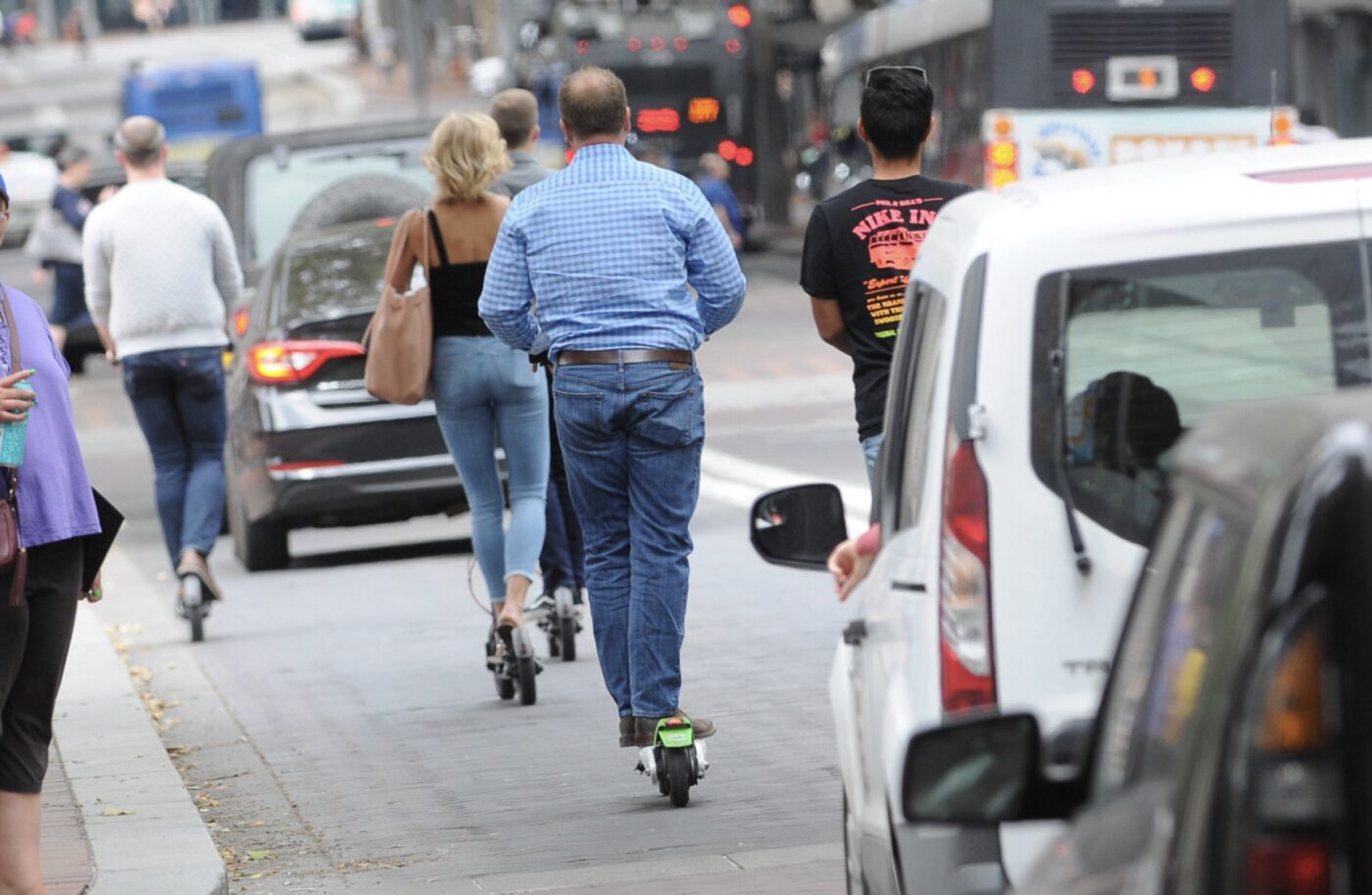The Portland Bureau of Transportation has taken a notable step forward in their embrace of micromobility. For the first time since they began annual bike counts in the 1990s, PBOT and their team of volunteers will also tally the number of electric scooters, skateboarders and one-wheelers that roll past the over 300 count locations this summer. Also this year, they plan to make their first attempt at segmenting out the number of electric bikes on our roads.
PBOT has done annual bike counts longer than any other major city in America. Their dataset includes counts from before the year 2000 and has given planners and advocates and invaluable resource to gauge progress and glean insights. This year’s count will likely be scrutinized more than usual. That’s because last year’s count exposed a major cycling decline since 2019 and things in the transportation world have been very topsy-turvy since Covid hit in 2020. “The 2023 counts will be an important measure to see if and how Portlanders are responding to new commutes, new infrastructure, and a new normal,” reads PBOT’s website.
“Without any real data, you just have no voice.”
– Cory Poole, NW Skate Coalition
We’ll also gain a better understanding of the impact these new micromobility vehicles are having on our transportation system. Back in April we shared how e-scooter ridership was very healthy in Portland — even as bike counts dwindled. Are scooters, electric skateboards, and one-wheels luring people off their bikes? Are their enough of these users to demand a greater voice in infrastructure planning and policy decisions?
Cory Poole with Northwest Skate Coalition hopes so. He’s happy PBOT will get more serious about counting more than just bikes. In a phone call today, Poole reminded me that PBOT counted skateboards back in 2014, but that effort wasn’t very robust and it only lasted three years. He thinks having better data about how many people are using scooters and skateboards (he’s even noticed a big uptick in roller skaters), will give these modes a bigger seat at the table. “People are choosing a much wider range of modes to get around, and without data, you can anecdotally say, ‘Oh, I see skateboards all the time, or ‘I see scooters all the time.’ But without data, it’s really hard to put that into any kind of useful narrative, especially if you’re asking the city for money.”
“Without any real data, you just have no voice.”
Right now, Poole says, skateboarders and scooter-riders are not represented on an of PBOT’s three modal advisory committees — which specifically represent the interests of bicycle, pedestrian and freight advocates. “Hopefully, if they can see that a certain percentage of people out there are skating, scooting, and roller-skating around, that there should be some voice voice at the table.”
What would an advocate like Poole do with a stronger voice? He’d push for smoother pavement, smaller expansion joints on bridges, and lane markings that don’t make skateboarders slip.
This new approach from PBOT will also hasten awareness and evolution that “bike lanes” of the future might intentionally welcome more than just bikes. As we shared back in March, there’s been a push from some urban planners to re-frame bike lanes and be more inclusive of a wider range of lightweight vehicles that aren’t ready to mix with car drivers, but are not typically considered as bike lane users.
PBOT signs up and trains dozens of volunteers for their counts each year. They will fan out to over 300 locations citywide and counts will begin June 6th and run through September 28th. Sign up to help and learn more about the counts on PBOT’s website.


